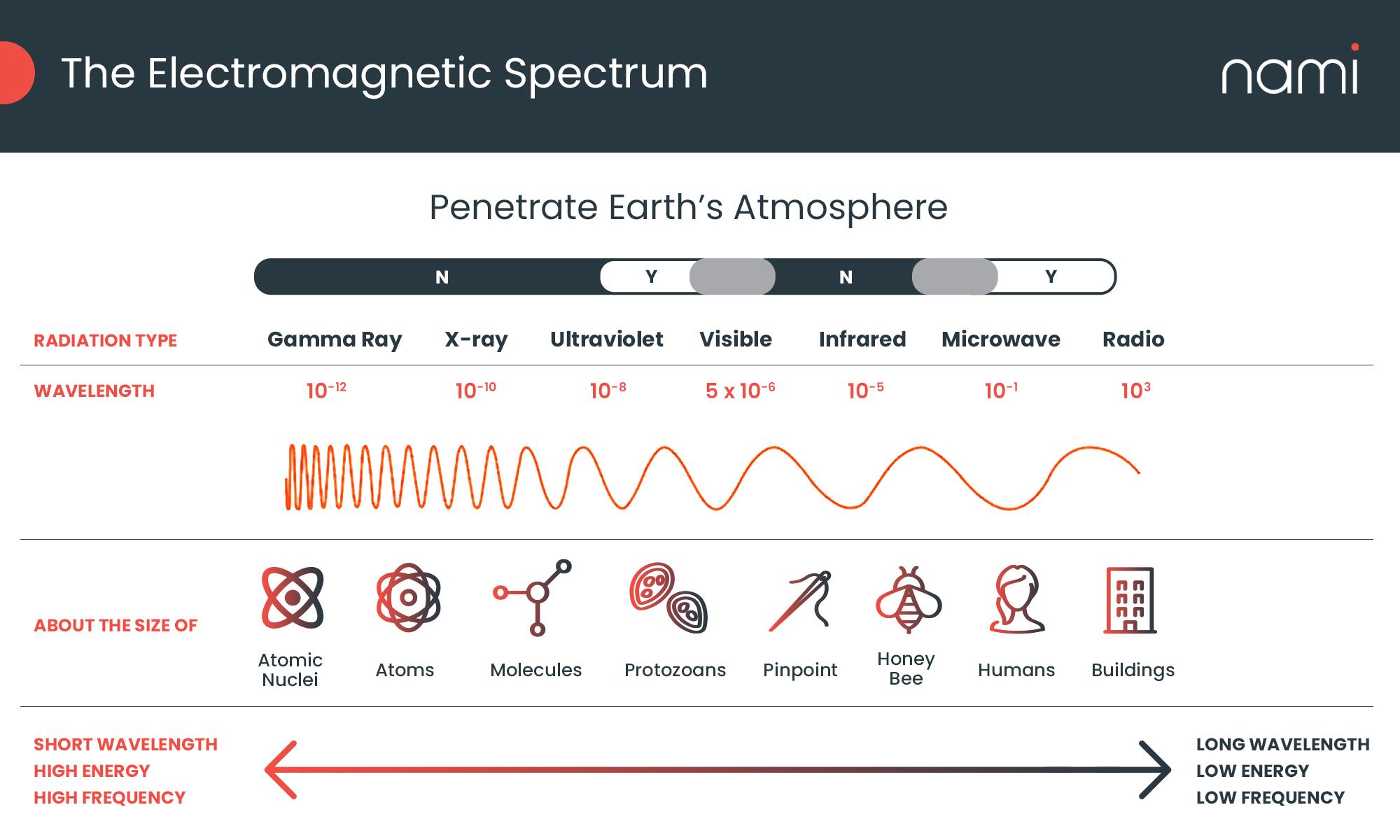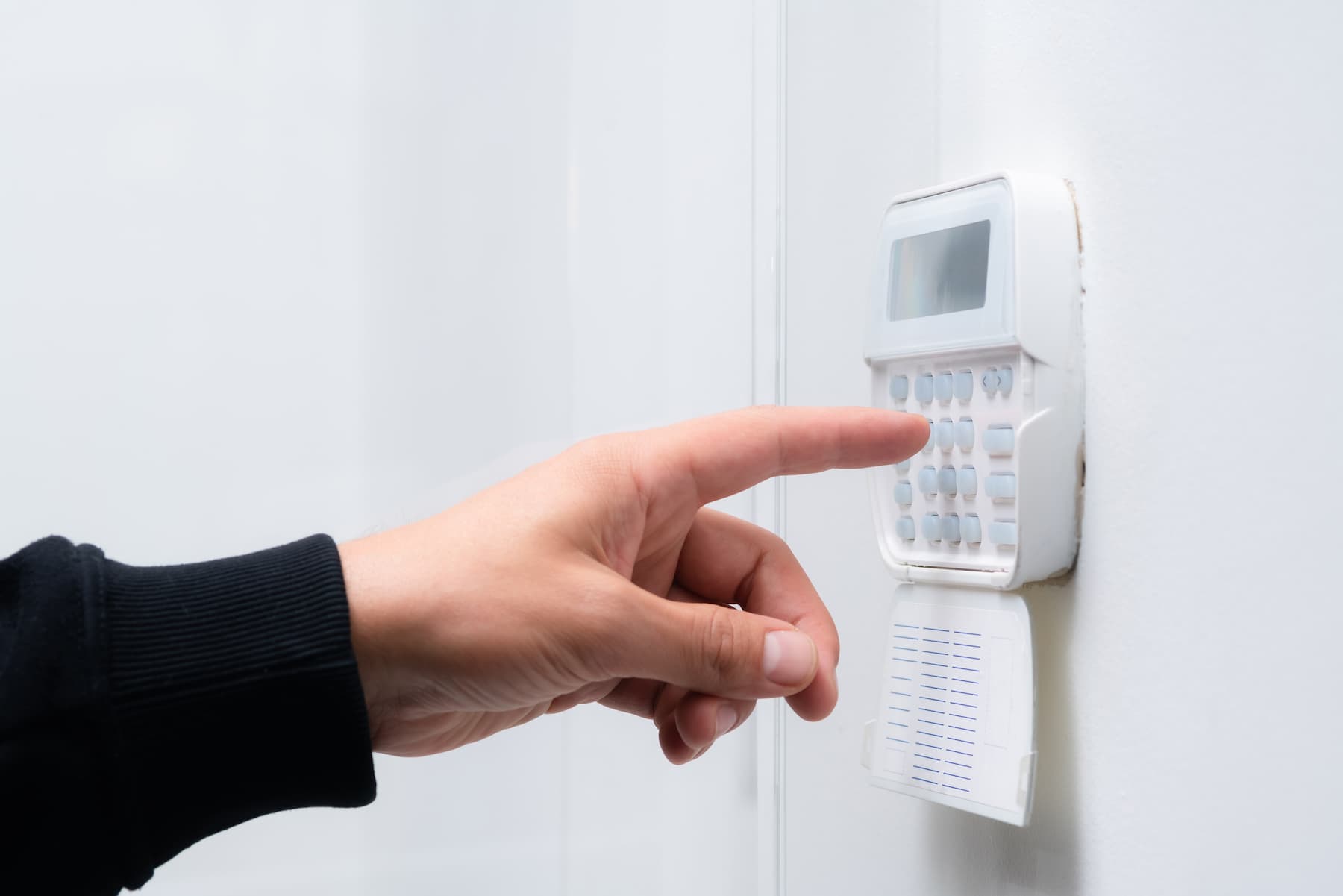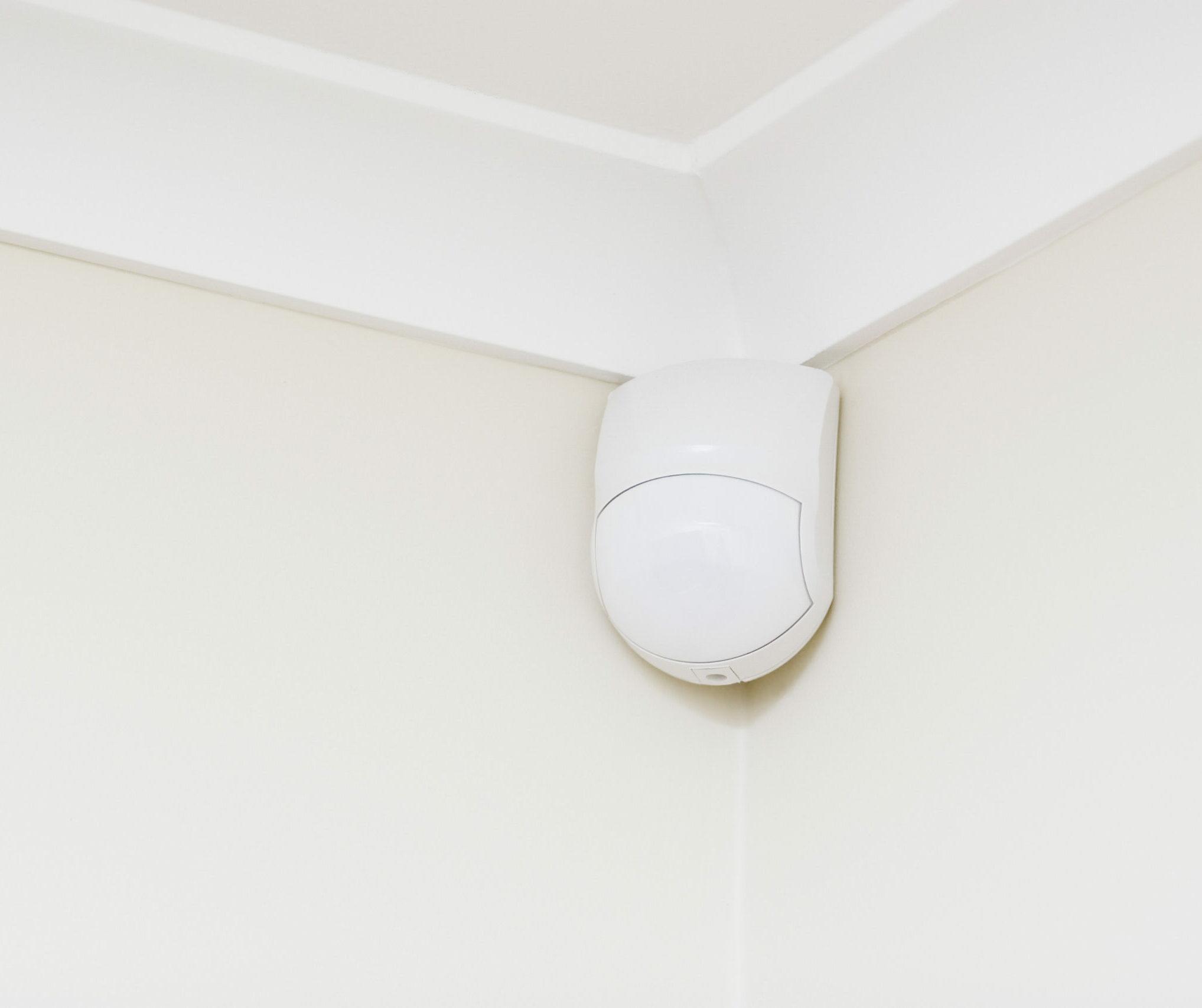Key Takeaways
- Wi-Fi sensing uses the power of wireless local area networks to detect and interpret motion and presence.
- The origins of Wi-Fi sensing can be traced back to early experiments with radar and related technologies.
- Applications of Wi-Fi sensing include, but are not limited to, home security, energy efficiency and health/wellbeing monitoring.
- Wi-Fi sensing has a range of benefits over other sensing technologies, though it can be fruitfully combined with those technologies.
- Benefits of Wi-Fi sensing include its ease of set-up, interoperability, non-line-of-sight capabilities and coverage.
Wi-Fi sensing is a new technology, revolutionizing the way we think about smart homes and smart buildings. Wi-Fi sensing uses Wi-Fi waves to detect motion and presence and then applies machine learning algorithms in order to facilitate advanced applications.
In this guide, we explain in detail how Wi-Fi sensing works, the origin and history of the technology, some of its applications, and the benefits of using it over other sensing technologies.
What is the Definition of Wi-Fi Sensing?
A sensing technology detects physical or biological phenomena, and turns that information into electric signals which can be interpreted for a variety of purposes. Well-known sensing technologies include security cameras, passive infrared (PIR) motion sensors, and radar.
Wi-Fi sensing uses Wi-Fi — also known as wireless local area networks (WLAN)— to detect and interpret presence and motion. Wi-Fi sensing detects and interprets motion through two stages:
- Pre-processing and initial filtering. The raw data provided by Wi-Fi devices (known as ‘CSI’ or ‘channel state information’) is filtered to rule out pets and other non-human movements
- Higher-level processing. AI and machine learning algorithms then analyze that data for sophisticated use cases, such as interpreting breathing patterns.
Pet usually done during the motion detectionp the raw data (CSI values), filtering, te may or may not include some AI / ML) and wer usecase
Wi-Fi sensing is implemented in technology via several different ‘layers’:
- A hardware layer, which enables devices to send, receive and interpret Wi-Fi signals
- On-device processing – ML on the device collects insights about motion. The device is also able to interact with 3rd party devices, e.g via Matter
- Cloud services – 3rd-party cloud platforms can be used to connect Wi-Fi sensing insights with other solutions and enablers, such as voice assistants.
It is also common for ‘middleware’ platforms to be created to enable developers to construct their own Wi-Fi sensing applications.
Wi-Fi sensing has a range of applications, including home and building security, energy efficiency, and healthcare monitoring. We discuss these applications in greater detail below.
The History of Wi-Fi Sensing Technology
While Wi-Fi sensing technology has largely been developed over the last 15 years or so, it has its origin in much older technology. To understand Wi-Fi sensing it is necessary to understand the concept of ‘wireless’ transmission itself.
In the early 19th century, telecommunication by telegraph wire, ‘wired’ communication took off. This was associated with the rise of the railroad system which relied on telegraph wires for communication.
Transmission of information without physical wires had to wait until the discovery of electromagnetic radiation: In 1864, the physicist James Clerk Maxwell predicted the existence of electromagnetic radiation.
That is, electric and magnetic fields traveling through space as waves. The existence of these waves was confirmed by another physicist, Heinrich Hertz, in 1887. He also demonstrated that these electromagnetic waves were affected by, and could be reflected by, solid objects.
The frequency of these waves can be measured, just as the frequency of ocean waves can be measured: If the time between each ‘crest’ of the wave is one second, that means a frequency of 1 cycle per second or ‘one hertz’. Wi-Fi waves have a frequency in the ‘Gigahertz’ range, which means that they move at a rate of a multiple billion cycles per second.
The electromagnetic spectrum covers frequencies ranging from one hertz to above 1025 hertz, as well as respective wavelengths and photon energies. Low frequencies mean long wavelengths and low photon energy. High frequency means short wavelengths and high photon energy. The spectrum is itself divided with distinct bands which have different names, going from low frequency to high frequency, common names for those waves include:
- radio waves
- television waves
- microwaves
- radar waves
- infrared
- visible light
- ultraviolet
- x-rays
- gamma rays
Waves of different frequencies can operate, and are often produced, differently.
The diagram below explains how our common terms for different types of electromagnetic radiation correlate with wavelength, frequency and photon energy.

What does any of this have to do with using Wi-Fi to detect motion and presence?
In 1895, a Russian Imperial Navy physicist, Alexander Popov, was testing an early version of wireless communication between two ships, when he noticed an interference in the wave pattern caused by a third ship. Popov observed that this might be used for detecting objects (for more information see V. S. Chernyak and I. Y. Immoreev, “A Brief History of Radar,” in IEEE Aerospace and Electronic Systems Magazine, vol. 24, no. 9, pp. B1-B32, Sept. 2009, doi: 10.1109/MAES.2009.5282288.) This early version of radar works in a similar way to Wi-Fi sensing.
In 1896, Guglielmo Marconi patented the concept of a wireless communication system, and radio communication was created.
Wireless local area networks (WLAN), also known as Wi-Fi, was invented in the late 80s. Contrary to common belief, it does not stand for “wireless fidelity”, and is likely a play on words referring to “Hi-fi”.
Wi-Fi operates at a range of frequencies, with some frequency availability being location-dependent and some requiring licensing. Possible Wi-Fi frequencies include:
- 900MHz
- 2.4Ghz
- 3.65GHz
- 4.9-5GHz
- 5.9GHz
- 6GHz
- 60GHz.
Applications of Wi-Fi have since expanded to cover a range of applications that we can call “Wi-Fi Sensing”. This includes:
- motion and presence detection
- gesture recognition
- health monitoring
- non-line-of-sight or ‘through the wall’ sensing
- emotion recognition
- people counting
- smoke detection
- sleep detection.
For a thorough survey of these possibilities see Khalili, Abdullah & Soliman, Abdel-Hamid & Asaduzzaman, Md & Griffiths, Alison. (2020). “Wi-Fi Sensing: Applications and Challenges.” The Journal of Engineering. 2020.
How Does Wi-Fi Sensing Work?
In the simplest case, think of how a computer uses Wi-Fi: The computer translates data into an electromagnetic signal, and then transmits that using an antenna. Waves then flow from the antenna to the wireless router. The router in turn converts the signal back into data, and then sends that data across the internet, usually via a physical medium: Traditionally via copper telephone wires, but more commonly today through fibre-optic cables. Satellite internet does the same thing without a physical medium.
How does this traditional use of Wi-Fi, for communication, translate into Wi-Fi sensing?
When you move around your home, devices enabled with Wi-Fi sensing can send out waves which are distorted by physical objects, including individuals moving around the home. These disruptions are picked up by Wi-Fi sensing technology and analyzed by machine learning algorithms to determine who (or what) is moving and in what way.
Wi-Fi sensing is implemented in the smart home or building using tiny microchips that can be built into a range of different physical devices and infrastructure. For example
- Retrofitted power outlets
- Retrofitted light switches
- Wi-Fi routers
- Purpose-built Wi-Fi sensing devices.
Is There a Technical Standard for Wi-Fi Sensing?
As observed earlier, different technologies operate on different frequencies on the electromagnetic spectrum. Without an agreement on where and how Wi-Fi sensing will operate on the spectrum, devices with Wi-Fi sensing capability may not be interoperable. Besides facilitating interoperability and compatibility between different Wi-Fi sensing devices, a Wi-Fi sensing standard will also help ensure
- product safety
- coherence with the broader family of Wi-Fi standards
In light of this, a standard, set to be unveiled in 2024, is being developed (the 802.11bf Wi-Fi standard) in order to standardize Wi-Fi sensing.
Currently, it is proposed that there be a division of Wi-Fi sensing:
- lower-frequency waves (1GHz to 7.125GHz) for motion sensing in large spaces
- higher-frequency waves (45GHz and above) for micro-movements.
What Are the Possible Applications of Wi-Fi Sensing?
As a relatively new technology, there is a lot of room for innovation. However, some of the possible applications are considered below
1. Home security
Traditional home security systems often rely on visual detection (cameras). An intruder alarm can then be sounded, both within the property and remotely via smartphones etc. Wi-Fi sensing can provide a superior form of motion detection as it is:
- non-line-of-sight technology — it can ‘see’ through walls
- privacy-conscious — it protects the privacy of home or building occupants as there is no acquisition or recording of personal data.
2. Healthcare and well-being monitoring
The population is aging, with the worldwide population of over 60s expected to grow to 1.4 billion by 2030. Most of those 65 and overspend the majority of their time at home.
The risk of falling is a serious issue for those over 65, and is a leading cause of death.
Existing technologies for elderly fall detection include ambient sensing, wearables, and vision-based technology.
The problem with ambient vision-based technology is that it is ‘line of sight’: It will generally only work in the room in which the individual is located. By contrast, Wi-Fi sensing can detect falls, despite the presence of walls. It also doesn’t rely on the acquisition and transmission of personal data as a vision-based system does. So far, wearables have been known to be error-prone with a high number of ‘false positives’.
Fall detection applications will be invaluable both in the home and in assisted living contexts.
More generally, Wi-Fi sensing can be a useful home monitoring tool for family well-being: It can detect, for example, whether children have arrived in the house, or left, at a scheduled time
3. Energy efficiency
Wi-Fi sensing can be used to detect when individuals have arrived home, and when they have left, and power down appliances and devices accordingly.
This could be of interest to property technology (PropTech) firms, and consumer electronics manufacturers as part of establishing energy-efficient homes and buildings.
Energy efficiency applications may also be beneficial to EnergyTech firms that create energy rates and tariffs based on consumption.
Consider the case of HVAC systems: As heavy energy users, optimizing the use of these systems could have considerable energy efficiency benefits. An important optimization measure is that their cooling and heating setpoints are increased and decreased during unoccupied times with the goal of saving energy. The best way of achieving this is to have real occupancy data, the kind of data that Wi-Fi sensing is well-positioned to provide. For more information see Kingsley Nweye, Zoltan Nagy. “MARTINI: Smart meter driven estimation of HVAC schedules and energy savings based on Wi-Fi sensing and clustering“. Applied Energy. Volume 316, 2022.
What Are the Main Challenges Faced by Wi-Fi Sensing?
Both in research and industry, some challenges or limitations for WiFi sensing have been observed. In a meta-study titled Wi-Fi Sensing: Applications and Challenges A. M. Khalili, Abdel-Hamid Soliman, Md Asaduzzaman and Alison Griffiths observed the following limitations:
- Multipath propagation — this occurs where a Wi-Fi signal travels along more than one path between the transmitter and receiver. This is caused by refraction or reflection (e.g., reflecting off surrounding surfaces) and reduces the quality of the received signal.
- Occlusion of the Wi-Fi signal — certain objects can stand in the way and block the Wi-Fi signal
- Presence of large numbers of people — Received Signal Strength (RSS), a common form of Wi-Fi sensing was shown to be inaccurate at detecting people in large crowds.
However, these do not appear to be challenges for Wi-Fi sensing technology itself, but rather specific methods or protocols that have been implemented in Wi-Fi sensing. For example, the same paper showed that using an alternative to RSS, Channel State Information (CSI), allowed for far more accurate people detection in crowds.
More serious challenges for Wi-Fi sensing that relate to the technology itself include:
Distance covered — in principle, there is a limit to how far away a Wi-Fi sensing device can accurately detect motion. Currently, Wi-Fi sensing can reach a distance of about 45 meters (2.4 GHz) or 15m (5 GHz) . Another form of motion detection (LIDAR — Light Detection and Ranging) can reach up to 200 meters. This laser-based motion sensing is common in some industrial and automotive applications.
Outside applications — Wi-Fi signals are affected by the weather and are therefore less effective outdoors than some other sensing technologies.
What Other Sensing Technologies Exist?
Sensing technology involves any device that detects the physical, chemical or biological qualities of objects, and then converts that information into a signal (usually an electric signal).
Other common types of sensing technology include:
- Video cameras
The physical appearance of humans and other objects is converted into an electric signal. This can then be interpreted by an algorithm in order to send security alerts, or notify of falls. - Microphones
A similar principle to video cameras, except sound, is converted and interpreted. - Passive infrared (PIR) sensors
These sensors detect heat energy, and therefore can be used to detect human motion. These are commonly used in security systems. - Thermographic cameras
A hybrid of PIR and video cameras, thermographic cameras (also known as infrared cameras) form infrared images, which can then be interpreted by algorithms. - Wearables
Wearables (such as smart watches) can pick up and interpret human movement from the wearer. - Smartphone sensors
Smartphones can be equipped with a range of sensors: gyroscopes (which pick up orientation), accelerometers (which can detect motion), barometers (which detect pressure and can be used to assess weather) and magnetometers (which detect magnetic fields and can be used to determine phone orientation). Often these sensors can work in tandem to create complex information. - Radar Sensing
Radar, motion detection using radio waves, can also be deployed in home security. Like Wi-Fi sensing, radar sensing has a long range and broad coverage. It does, however, require more sophisticated and expensive antennae and receivers. Furthermore, due to the high frequency of radar, it can have trouble detecting motion through walls.
What Are the Benefits of Wi-Fi Sensing?
While it depends on the application in question, the benefits of Wi-Fi Sensing could be summarized as:
- Non-line-of-sight motion detection
Many traditional forms of sensing, such as video cameras, are ineffective against physical barriers like walls and furniture. Wi-Fi sensing has no problem detecting motion and presence through physical barriers. - Ease of installation
As Wi-Fi sensing depends on traditional Wi-Fi technology, it is easily integrated into existing technology. Routers, sockets and light switches can be integrated with Wi-Fi technology, creating ‘digitized walls’. Standalone units can be made ‘plug and play’ and draw a minimal amount of electricity. - Interoperability
As a Wi-Fi technology, Wi-Fi sensing hardware, middleware and software can be easily integrated with existing consumer electronics and Internet of Things (IoT) products. - Privacy
Many sensing technologies, such as video cameras, microphones and wearables gather personal data about occupants. Wi-Fi sensing does not require personal data, and therefore poses less of a risk to applicants. - Surface coverage
Wi-Fi sensing can cover large indoor spaces, and the coverage can be extended simply by adding additional Wi-Fi sensing units.
Conclusion
Wi-Fi sensing uses the power of Wi-Fi to detect and interpret motion and presence. It has multiple applications, but is commonly deployed through home security, energy efficiency, and health and safety monitoring applications.
Wi-Fi sensing hardware, middleware and software can be integrated with existing devices or infrastructure, or introduced via purpose-build hardware.
Wi-Fi sensing has a range of benefits over existing technologies, including ease of installation, interoperability, non-line-of-sight motion detection, privacy protections and broad coverage.
FAQ
Antennae within enabled devices emit Wi-Fi signals or waves at a high rate. These Wi-Fi waves ‘bounce’ or ‘break’ around solid objects. Machine learning algorithms within the Wi-Fi sensing technology learn to distinguish between objects that move (such as humans) and those that don’t (such as walls).
Wi-Fi is normally used to communicate between your devices/computers and the internet. But this is just one application of Wi-Fi. It can also be used to detect motion and presence, including human motion and presence.
Yes. Wi-Fi sensing can be combined with cameras, microphones and other sensing technologies to establish comprehensive sensing technology within the home or building.
Wi-Fi, and hence Wi-Fi sensing, can travel through walls. However, it can be affected by sufficiently solid walls or objects. This impact can be mitigated by using multiple Wi-Fi-enabled devices.







